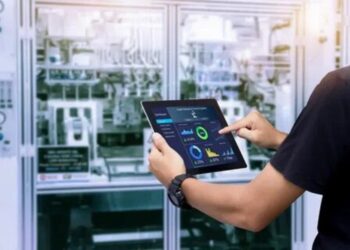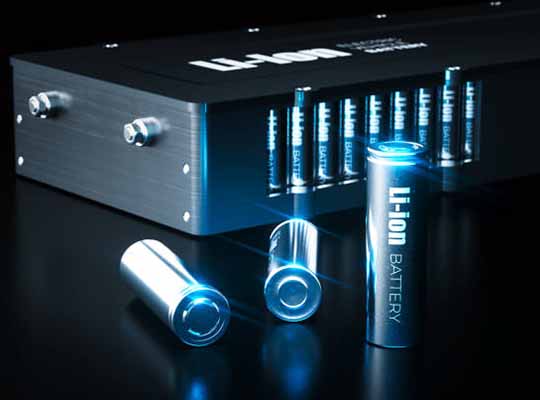BOSTON – Electric vehicle battery packs have increasing requirements concerning their thermal runaway mitigation strategy. Meanwhile, the aerogel industry is overly dependent on oil & gas and in need of diversification. Could this be the perfect match between a problem looking for a solution and a solution looking for a problem?
Despite the space tech reputation, silica aerogel is not a new discovery; in fact, the complicated history dates back almost 100-years. In that time there have been significant technical developments and headline applications, but the commercial journey only really gained traction in the 21st century. In the past 20-years the industry has grown, finding key applications in the oil & gas and petrochemical sectors, however, it is difficult to call the market a success. Growth has somewhat plateaued, the process means prices remain high, there have been prominent lawsuits, promising innovations have not propelled the adoption, and the attempts to diversify into other sectors achieving minimal success. That is until now.
IDTechEx has provided the leading market intelligence report on this industry for many years. Their latest version, “Aerogels 2021-2031: Technologies, Markets and Players”, provides the reader with key player, material, and application information. In addition, IDTechEx has also extensively studied the topic of thermal management for electric vehicles and a detailed assessment of the market can be found in “Thermal Management for Electric Vehicles 2021-2031”.
The lithium-ion battery market is booming, primarily driven by the transformation in the automotive sector. Of course, there are numerous considerations including the cell chemistry, cell format, price, supply chain, and more, but one essential piece of the puzzle is the strategy being adopted for thermal management and fire safety. Presently, there is a distinct lack of consolidation in pack design, and when coupled with an unknown regulatory outlook, charging expectations, price considerations, and rapidly developing battery technology it is unlikely to converge soon. The one thing that can be said with confidence is that longevity and safety will remain critical.
There are 4 main ways to cool current lithium-ion batteries: air, liquid, refrigerant, and immersion. IDTechEx analysis shows an increasing trend to active liquid cooling with each process having distinct strengths and weaknesses. Of course, cooling a battery is just part of the problem and warming the battery up is also a critical role. A further key consideration is what goes in between these cells and modules to not only facilitate the heat transfer, but also play roles in structure, energy absorption, space-filling for corrosion considerations, and more. Then there is the question of what happens in the event of a cell entering thermal runaway and do you want to try and contain that at the cell, module, or pack level. Per mile-driven EVs are currently safer than their ICE counterparts, but that does not mean that fires don’t happen, costly recalls have been forced upon notable OEMs, and damaging headlines are regularly seen. IDTechEx has identified numerous strategies that are all outlined in detail within their market report.
This is where silica aerogel blankets and sheets enter the picture with their superb thermal insulation and fire-retardant properties. Like all solutions they have their criticisms, ceramic players will say that that max temperature is not high enough (<1,000 C), foam players may criticize their compression properties, and both will point to price. However, all incumbents and emerging solutions have notable weaknesses, and it will depend on the OEMs pack design and safety tolerances; the reality is that the beneficial combination of aerogel properties means that they are starting to gain more of a market share. Dedicated products are being launched, with the appropriate balance of properties and thickness, and solutions being found as to how to integrate this into a high-throughput automated manufacturing line. The key area is specifically between pouch and prismatic cells, the first adoption was seen in China with both local aerogel manufacturers and end-users, but it is expanding beyond this to other East Asian markets and North America; key aerogel manufacturers are making significant announcements of orders and engagement.
This is certainly not the end of the story as the evolution of the battery pack continues at pace, there is the upcoming jump to cell-to-pack architectures, the rise of solid-state batteries, a shifting regulatory landscape, vehicle price, and consumer expectations all to contend with. The same is true for aerogels with capacity expansions to be realized and innovations for both silica and polymer (which are also being considered for an inter-cell role) variants continuing to emerge.
IDTechEx do not expect one solution to emerge anytime soon, in fact, these thermal runaway mitigation strategies will be combined for maximum effectiveness and to serve multifunctional needs. The electrification of the automotive sector is completely re-writing the supplier landscape and as new challenges emerge this will continue to develop, but silica aerogels will certainly play a role in providing a critical and potentially highly lucrative growth opportunity for the industry.
Please see the IDTechEx report, “Aerogels 2021-2031: Technologies, Markets and Players”, for the most comprehensive overview of the aerogel market, including benchmarking studies, case studies, and granular market forecasts. As well as detailed manufacturer analysis is provided including their capacity, revenue, products, production processes, planned expansions, and more.













